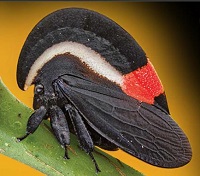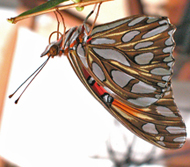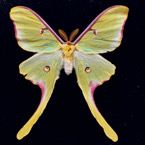-
wollastoni

- Site Admin

- Posts: 462
- Joined: Fri Mar 18, 2022 9:51 am
Re: Agrias butterflies
by wollastoni » Sat Apr 20, 2024 2:51 pm
There are less variations in female aurantiaca : https://agrias-butterflies.com/agrias-p ... urantiaca/
-
kevinkk

- Premium Member - 2024

- Posts: 324
- Joined: Mon May 23, 2022 5:06 pm
Re: Global travel collecting
by kevinkk » Sat Apr 20, 2024 2:46 pm
Easy. After a week in Naples, I was told by my sister's husband I was speaking better than people who had been at the base for more than a year.
It's a sign of respect. Without a "smartphone".
Same with access, private property is that way for a reason.
-
Trehopr1

- Global Moderators

- Posts: 1000
- Joined: Thu Mar 31, 2022 1:48 am
Re: Papilio rutulus
by Trehopr1 » Sat Apr 20, 2024 8:45 am
Very nicely done on the spreading !
-
lamprima2

- Premium Member - 2024

- Posts: 93
- Joined: Mon May 23, 2022 8:16 pm
Papilio rutulus
by lamprima2 » Sat Apr 20, 2024 4:34 am
- Attachments
-
- DSC_6221 IN.jpg (564.29 KiB) Viewed 45 times
-
Panacanthus

- Premium Member - 2024

- Posts: 115
- Joined: Tue May 31, 2022 7:51 pm
Re: Chien Lee
by Panacanthus » Sat Apr 20, 2024 12:14 am
-
Trehopr1

- Global Moderators

- Posts: 1000
- Joined: Thu Mar 31, 2022 1:48 am
Re: A parade of Catocala moths
by Trehopr1 » Fri Apr 19, 2024 6:00 pm
I zoomed in on the lower specimens forewing "wing pattern" and I can see many points where certain markings, line squiggles, blank cells are all pretty much in the same place except that it is a VERY melanic appearing individual.
It could be that perhaps it's diet as a larvae was on something a bit different for the species or the nutrient contents were richer thus producing this dark one.
Marvelously different for the species.
I imagine that trying to put together a Mona fascicle on these moths (just for the eastern half of the US) could prove to be very daunting for anyone because of variations within species, notable forms, and even possible hybridization of some species.
A tough subject indeed....
-
Chuck

- Premium Member - 2024

- Posts: 907
- Joined: Mon May 23, 2022 2:30 pm
Re: Anisota virginiensis
by Chuck » Fri Apr 19, 2024 5:32 pm
-
58chevy

- Posts: 381
- Joined: Mon May 23, 2022 5:58 pm
Chien Lee
by 58chevy » Fri Apr 19, 2024 5:06 pm
https://photos.chienclee.com/index/G0000DxTz75evl1M
-
58chevy

- Posts: 381
- Joined: Mon May 23, 2022 5:58 pm
Re: Anisota virginiensis
by 58chevy » Fri Apr 19, 2024 4:49 pm
- Attachments
-
- D kendalli2.jpg (21.71 KiB) Viewed 19 times
-
- D kendalli1.jpg (21.29 KiB) Viewed 19 times
-
Jshuey

- Global Moderators

- Posts: 159
- Joined: Tue Mar 22, 2022 2:27 pm
Re: Anisota virginiensis
by Jshuey » Fri Apr 19, 2024 2:44 pm
..., or may it was Dryocampa rubicunda? Heck it's a moth - so I barely pay attention!
John
-
billgarthe

- Premium Member - 2024

- Posts: 19
- Joined: Wed May 25, 2022 2:32 pm
Re: A parade of Catocala moths
by billgarthe » Fri Apr 19, 2024 1:45 pm
-
Chuck

- Premium Member - 2024

- Posts: 907
- Joined: Mon May 23, 2022 2:30 pm
Re: Global travel collecting
by Chuck » Fri Apr 19, 2024 12:52 pm
This is virtually universal, including in USA.wollastoni wrote: ↑Tue Apr 16, 2024 6:24 am
The good practice is to have a guide who will ask before entering a "land" the cost and negotiate it. Usually a pack of cigarettes + few dollars will make the job. If you don't negotiate "before", then they will ask you to pay "to leave the land"... and here the cost can be huge as you are seen as a very rude man that should be punished for his rudeness.
Look at it from the landowner's perspective. They work the land, they work it hard. But things are rather consistent.
Then you show up with your butterfly net.
You are bringing nothing to their life, whether in Montana or Ecuador. Your presence can be of zero benefit. In fact, quite the opposite: your presence is likely to be a problem.
First, the common anecdote which I've advised many times: "never trust a white man." Locals think it's odd coming from me, but it's true. They well known that historically white men bring problems, they virtually never improve any situation. They're always up to something. This works in Montana too: what good have urban or suburban people ever brought? Answer is "nothing".
At one roadblock it was quickly explained "no white men allowed past, no exceptions" (I understand the local language.) Despite having a local guide, that was set in stone. The only way we got past after 30 minutes was because we'd brought a third person with a relative in the destination village. On Guadalcanal, several researcher friends who are white, born on Guadalcanal, are not allowed in some remote areas, so have to send Guadalcanal natives. These researchers KNOW they are not permitted there, and know better to push their luck because they are at serious risk of physical injury or death.
Second, your butterfly net. What are you doing here? The worst answer is "I'm looking for endangered butterflies." Oh, what bad could possibly come from your good intent? Well, if you find one and report it, their land could be inundated by (in USA) USFWS, BLM (Bureau of Land Management), etc. and the next thing they know they've lost the grazing rights on 1000 acres. God forbid you find an arrowhead too.
You bring nothing to the table, you're only a problem.
The same in rural/ remote foreign areas. You bring nothing but problems. They already know that butterfly lives on their land, they don't need you to tell them. And they don't need more of your type running around smashing gardens and making noise. Oh dear, you ran out of food, you got hurt. Well, then somebody has to care for you...more of a drain.
Those who precede you have already put a nail in your coffin. Many pretend to be hikers or ecologists or whatever, but actually represent the interests of mining, logging, or other unwanted concerns. Nothing good came of them- what good can come from you. Who are you really?
On that, even collectors cause problems. I arrived at the Solomon Islands Dept of Natural Resources office to get an export permit. Sitting down with the #2 guy, my friend, I said that and his eyes lit afire, and as dark as his skin was I could see the red flush of extreme anger. Two very well known lepidopterists had come into country unannounced, collected, and skipped the country. To say that the DNR staff was angry is an understatement. "NO PERMITS!" took a while to get past, even when I had established interpersonal and professional relationships.
How would you feel if you came home to find that your brother's family was playing volleyball in your back yard and drinking your sodas and beer? It's universal that property ownership, whether personal or communal, is to be respected. So by showing up in Arizona ranch land or the deepest of Amazon, you're breaking a globally universal social norm, if nothing else.
As wollastoni cited, acknowledging land rights is respectful. In many cultures, the simplest, cheapest gift is expected. In Fiji, one brings Kava as a gift for the chief- even though they have PLENTY of Kava. Then, you will sit and drink that Kava with them. In Idaho, you go from farmhouse to farmhouse to find out who owns the land you want to explore, provide a simple gift (perhaps cigarettes, perhaps some 30-30 ammo) and maybe load some cow manure. Whether Fiji or Idaho, AFTER they get some of your time to analyze you, you might be granted access. And if you are, you may get the huge benefit of a ride, a guide, and free dinner.
If you don't take the time to respect the landowners, or if you think it's stupid, you have nobody to blame for being kicked out. There rules may differ slightly between Omaha and the Nile Delta, but at the core they're the same. Respect or pay the price.
-
Chuck

- Premium Member - 2024

- Posts: 907
- Joined: Mon May 23, 2022 2:30 pm
Re: Global travel collecting
by Chuck » Fri Apr 19, 2024 12:15 pm
Humans are adept at learning foreign languages. It is not for the Mensa, or the linguistic experts. Even the most simple, uneducated, and slow person can learn multiple languages through exposure. Immersion in a language for 30 days is virtual assurance that one will learn to speak a foreign language.
Most remote villagers speak several languages, despite a lack of formal education. I know people who have no high school (ages ~15-18) education and speak five languages. So I have no doubt everyone here can, with exposure, pick up a language quickly.
There are more difficult languages such as Russian, Mandarin (tones), and Lokuru. But in general, there actually isn't that much to learn to express the vast majority of needs: toilet, doctor, police, pharmacy, "where is", "I need". You don't have to be fluent to be understood; the exception might be Mandarin in which you think you're ordering an orange juice yet the server clearly hears "chainsaw." In Mandarin, those fluent in the language use tones, so cannot discern or extrapolate your "chainsaw" into "orange juice", in contrast to, say, a German at a US pub ordering a "bear" or an Australian ordering in "Beeyah."
Yes, in very remote areas the local may not speak one of the common European languages, but this is increasingly rare. Anywhere close to urban centers most will speak English, Spanish, French, or Mandarin. For English speakers in Latin America, you most likely know "el banjo", "mariposa", and "cervesa"; locals understand things like "pharmacy" and "police" because it's readily translatable into Spanish.
Attempting to speak the local (foreign) language can be a door opener. It demonstrates respect and equality, and effort. Yes, 1% of the time you might offend someone, but 80% of the time it's accepted well, and 19% of the time your pathetic attempt will generate laughter, which is one of the greatest ways to start bonding.
Foreign languages may present a challenge, but for the open minded they are not insurmountable.
-
Chuck

- Premium Member - 2024

- Posts: 907
- Joined: Mon May 23, 2022 2:30 pm
Re: Shiiping dead insects from other countries into the USA
by Chuck » Fri Apr 19, 2024 11:59 am
What should be done by an interested party is to analyze the current import regulations for personal use. The easiest way is to line-out the sections, paragraphs, and sentences that don't apply to personal use (eg. anything to do with commercial, institution, etc.) which leaves less to examine. Then look for caveats that make sections inapplicable (often called "loopholes" by politicians, fear mongers, and their acolytes: loopholes are not real, they do not exists- there is compliance, and non-compliance.)
With that, one should be able to determine the requirements and publish a summary.
I did this 20 years ago with import regulations when I was importing. I carried a printed copy of the laws with me, because enforcement does not know all the laws, they are not trained on the specific parts of the laws (particularly the caveats). I have already done it here for CITES, and I did it just out of interest concerning the export of Chinese CITES II specimens.
Instead of going round and round, a party that is interested in importing should do a bit of homework.
-
adamcotton

- Global Moderators

- Posts: 758
- Joined: Tue Mar 22, 2022 12:24 pm
Re: Specimen locale - Madagascar
by adamcotton » Fri Apr 19, 2024 10:38 am
The area ~20km+ west of Moramanga town is actually a well known butterfly locality.
Adam.
-
hewi

- Premium Member - 2024

- Posts: 80
- Joined: Mon May 23, 2022 8:44 pm
Re: Agrias butterflies
by hewi » Fri Apr 19, 2024 9:24 am
-
vabrou

- Posts: 93
- Joined: Mon May 23, 2022 11:22 am
Re: butterfly bait trap
by vabrou » Fri Apr 19, 2024 3:54 am
Using cyanide in traps that are moved/repositioned daily causes much greater opportunities for something more dangerous to happen. The majority of all my hundreds of insect traps have operated continuously non-stop for the past 42 years hear at my home property at the same locations. But also, I was able to place granular/briquettes into nearly all of my automatic-capture traps e,g, 1/4 pound (=0.1 Kg), for small bucket traps to (0.22 kg) or (.45 kg) depending on the type and size of the traps. This way I only have to add cyanide every 6-8 months to each trap (not every day). NaCn is hygroscopic and attracts H2O and the longer the cyanide is in the traps it get very wet, and its potency becomes less over time. So I have eliminated the huge amount of man-hours involved in placing the killing agent daily. I only go to each trap daily to pick up the high-quality captures.
Here e.g. in this photo of a clearwing (sesiid) moth trap, I have removed the lid and you can see the moth captures sitting on the screen, and you can see the granular NaCn in this photo below the the screen. It is necessary not to allow the insects to come in contact directly with the NaCn. The NaCn in this trap will last 6-8 months without touching it before adding more. The use of NaCn in this manner works by the humidity (H2O) normally occurring in the air slowly releases Hydrogen cyanide gas in the trap.
I want to state clearly that Hydrogen Cyanide will kill you, and is very dangerous. I have handled and used NaCn every day for the past 45 years and so far I am still alive and I have had no serious problems using this deadly chemical. I have not used any type of safety equipment, I just used common sense in handling it. Also here is a basket insert which sits above the cyanide with captures of some clearwing moths.
- Attachments
-
- DSCF4975 red b.jpg (703.57 KiB) Viewed 33 times
-
- The lure of sesiid collecting page 2, 1-1-2015 cr.jpg (115.05 KiB) Viewed 33 times
-
- 700 pix.jpg (403.24 KiB) Viewed 33 times
-
Luehdorf

- Posts: 27
- Joined: Mon May 23, 2022 11:08 pm
Re: butterfly bait trap
by Luehdorf » Fri Apr 19, 2024 1:32 am
@vabrou how much sodium cyanide do you use per trap and in which form? Just the powder? And when using ethyl acetate how much would you use per bait trap? Thanks a lot for all the details, I cannot wait to build one here, and I will post my results in a few weeks here in the thread!vabrou wrote: ↑Thu Apr 18, 2024 5:49 pm Correct, I use rolls of flexible fiberglass window screening, as I have fabricated and used a lot of these traps over the past half century. UV resistance is a must. But even this heavy duty window screening can be chewed up by hornets and bigger wasps. Over 300 of my 464 entomological publications and be freely accessed at this link, including many providing detailed instructions on how to fabricate different entomological equipment yourself: https://independent.academia.edu/VernonAntoineBrouJr
Regardless, the longest my traps operating 24 hours daily year-round and continuous here was 8 years and that was including lots of repairs. After 8 years I fabricated new traps.
As for cyanide, when someone tells you no, ignore them. Think out of the box. I have purchased dozens of 55-gallon and 50 gallon drums of sodium cyanide over the past half century. We use a lot of this because we have operated ~500 insect traps nonstop 24 hours daily 365-366 days/nights for the past 55 years. It is not necessary to buy laboratory grade chemicals, that is a waste of money and harder to obtain. Look for industrial grade, that is much easier to acquire. Your bugs will never know there are a few %% of impurities in what is killing them. The last (4) 50 kg drums of NaCn I purchased came out of Germany.
-
bugsy

- Posts: 11
- Joined: Tue Apr 25, 2023 10:46 pm
Re: Specimen locale - Madagascar
by bugsy » Thu Apr 18, 2024 11:00 pm
-
Annarobertson1947

- Posts: 68
- Joined: Thu May 04, 2023 12:31 am
Re: Agrias butterflies
by Annarobertson1947 » Thu Apr 18, 2024 10:48 pm
Just a bit puzzled over A.pericles females , I'm seeing that lets take as an example, pericles aurantiaca and mauensis ,the females in particular are to me identticle,
There is a shift in males acrossssp but the females are very consistent generally.
Any thoughts ??
